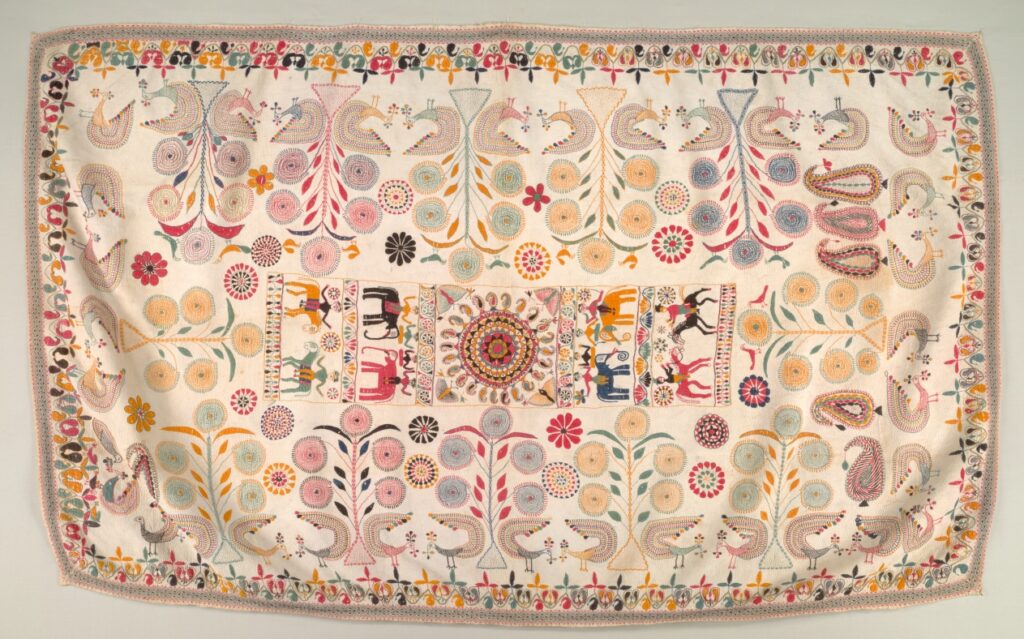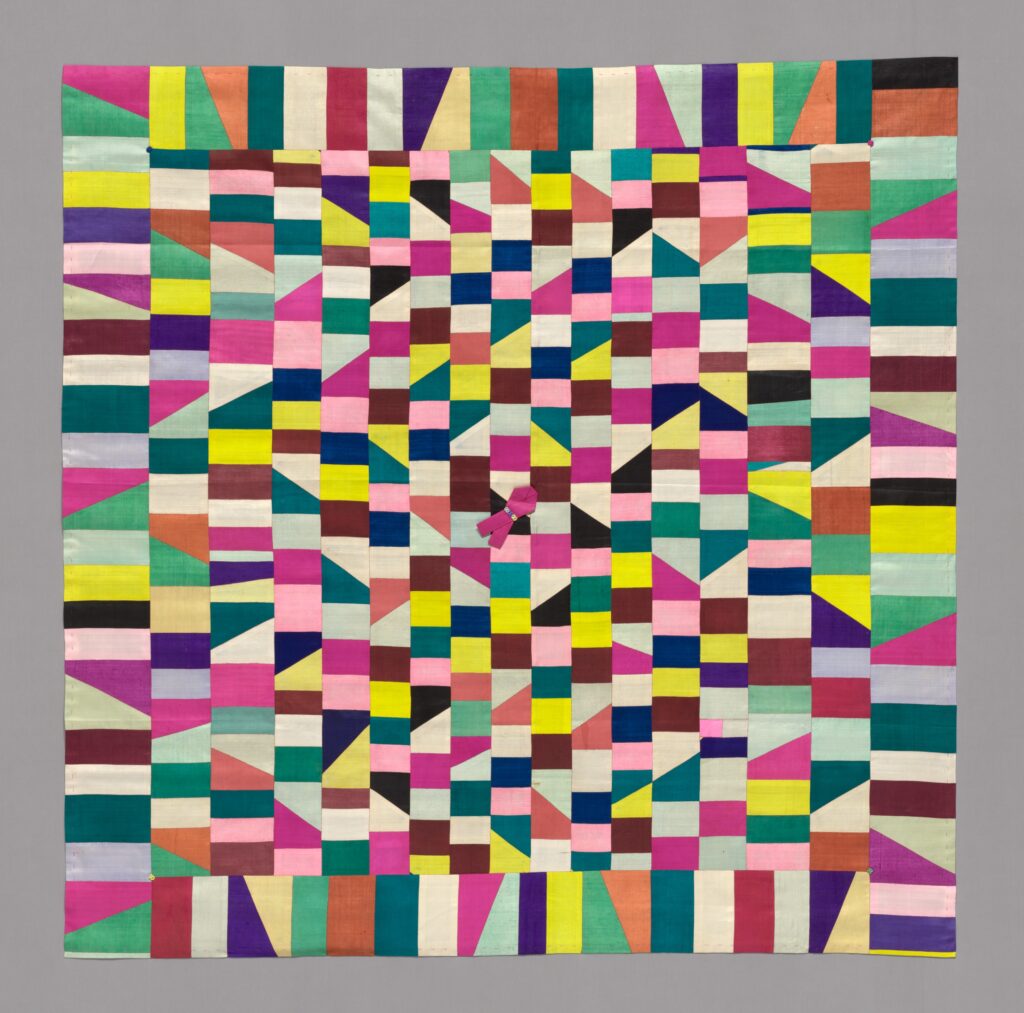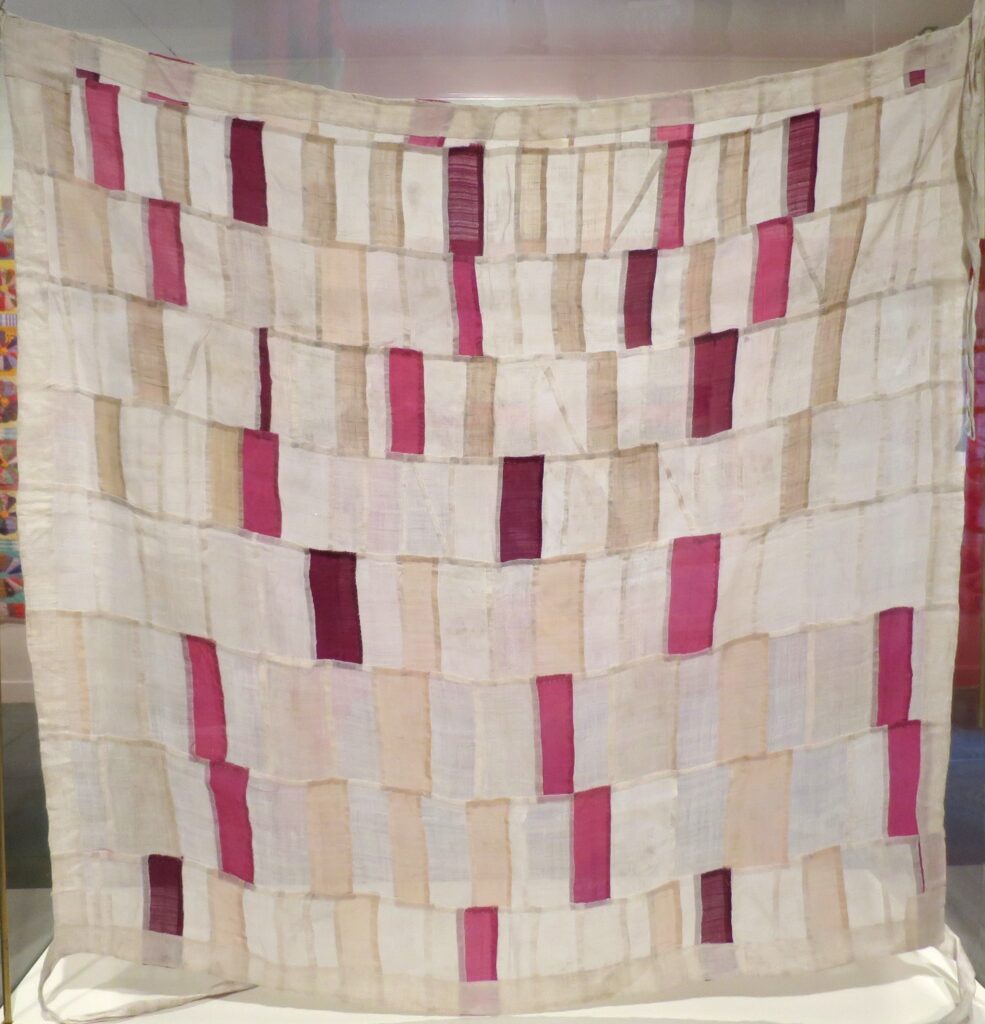
Asia boasts a wide array of embroidery styles reflecting the unique cultural and aesthetic values of the region. From Indian Kantha to Korean Bojagi and Japanese Sashiko Asian embroidery offers a rich variety of techniques and traditions.
Asian Embroidery Techniques
- Indian Kantha | Kantha embroidery is a traditional form of hand-stitched embroidery from Bengal, India, renowned for its simplicity and vibrant patterns. The word “kantha” derives from the Sanskrit term for “rags” or “patches,” reflecting its origins in repurposing old textiles. Historical evidence suggests kantha embroidery began to emerge as a distinct craft in the 12th century.
- Techniques: The technique involves stitching layers of cloth together using simple running stitches, which form intricate patterns and motifs. It is known for its use of running stitches to form intricate patterns on quilts, shawls, and garments.
- Repurposing: Kantha’s intention was originally to repurpose old sarees and cloth scraps into quilts, blankets and other household items. Typically the fabric used is a simple cotton or muslim with simple cotton thread. Designs often include vibrant floral patterns, birds, animals, and geometric shapes, reflecting both nature and folklore.




- Korean Bojagi (or Pojagi) | Bojagi dates back over a thousand years (Unified Silla Period 668-935 AD) and involves traditional patchwork techniques with geometric patterns and vibrant colors. The term “bojagi” is derived from the Korean words “bo” (to wrap) and “jagi” (cloth). A variety of fabrics including silk, cotton and hemp.
- Usage: Bojagi was historically used to wrap or cover items with beautifully crafted cloths, merging practical everyday activities with art. Wrapping gifts, carrying items (like bags), covering food and protecting valuables were all common functional usages of Bojagi.
- Modern Influence: Contemporary artists have adapted Bojagi patchwork techniques, which are distinguished by use of vibrant, geometric patterns and a variety of fabric types, including silk, cotton, and hemp. Typically a simple running stitch creates a patchwork effect that is both visually appealing and durable.


- Japanese Sashiko | Sashiko, which means “little stabs” in Japanese, is a traditional form of Japanese folk embroidery. It originated in rural Japan during the Edo period (1603-1868 AD) features simple, geometric patterns to create textured designs. The designs are both functional and aesthetic, with a focus on clean, repeated motifs.
- Techniques: This style employs running stitches often used for practical purposes, such as reinforcing kimonos and working clothes, showcasing the Japanese appreciation for practicality, frugality and the appreciation of simplicity.
- Sashiko Today: Over time, sashiko evolved from a purely functional practice into a form of artistic expression. Contemporary sashiko has recently experienced a resurgence with many artists around the world embracing its principles and techniques and often incorporates a range of colors and materials. While it still retains its roots in mending and reinforcing, today it is celebrated for its craftsmanship and beauty.
- Tidbit on photos: A stitching pattern called “kaki no hana” (means: persimmon flower) is reminiscent of the persimmon blossom. Both of the examples below feature this beautiful pattern you can see close-up in the detail photo.



Highlight
These embroidery traditions in India, Korea and Japan showcase how hand-stitched Asian textiles across cultures use embroidery to express widely varying regional aesthetics.